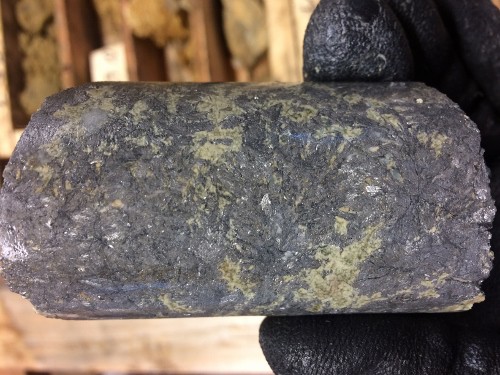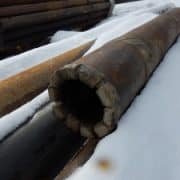Blackstone Minerals’ Consistent Cobalt Hits Continue to Polish Little Gem
THE INSIDE STORY: Blackstone Minerals (ASX: BSX) has made a rapid start and impressive progress since joining the competition to discover high-grade cobalt deposits.
Blackstone Minerals listed on the ASX in January 2017 and in July that year acquired 100 per cent of the Little Gem project, located in British Columbia, Canada.
Cobalt is very much a metal-of-the-moment, due mainly to its 60 per cent contribution to the makeup of lithium-ion batteries, which is the basis for 50 per cent of global demand.
Expected growing demand for electric vehicles leads the lithium-ion battery charge that is sweeping cobalt along in its wake.
As a result, cobalt is expected to have a supply deficit, especially as current global mining output is only just meeting demand.
The cobalt price has enjoyed a buoyant run over the past two years, rising from US$10 per pound (US$22,000/tonne) to US$40/lb (US$87,000/t).
Current prices are still well short of the highs of US$52/lb (US$115,000/t) experienced in 2008, which was the last time cobalt was in deficit.
Blackstone Minerals commenced a six-hole maiden diamond drilling program at Little Gem in 2017, which came up trumps from the get go.
The first drill hole intersected massive, semi-massive and disseminated mineralisation, returning:
4.3 metres at 1 per cent cobalt and 15 grams per tonne gold, including 1.1m at 3 per cent cobalt and 44g/t gold.
These results were encouraging and were consistent with high-grade historic underground drilling and adit channel sampling data results of 1.8m at 2.4 per cent cobalt and 112g/t gold and 1.8m at 4.4 per cent cobalt and 73g/t gold respectively.
The first hole only tested the upper portion of the mineralised target but was able to identify multiple zones of massive sulphide (cobalt-gold) mineralisation within a broader alteration halo.
Blackstone re-commenced its 2018 field season drilling in April and immediately revealed the Little Gem alteration halo to be much larger than the company had previously estimated.

The 2018 drilling results the company had received at the time of writing had consistently intersected a broad alteration zone, highlighting potential for a major hydrothermal system at Little Gem.
The third hole to be completed at Little Gem, LGD18-002, continued to encourage Blackstone, returning:
3.2m at 0.8 per cent cobalt and 4g/t gold, including 1m at 1.2 per cent cobalt and 5g/t gold.
“It’s very clear that the results we have achieved to date are in line with our expectations, especially with our first hole at Little Gem hitting three per cent cobalt,” Blackstone Minerals managing director Scott Williamson told The Resources Roadhouse.
“We have now followed that result with further high-grade cobalt hits of one per cent and over.
“To put that in perspective – our peers in Australia are averaging around 0.1 per cent cobalt.
“We have recorded two intersections of over one per cent cobalt, which is ten times anything our Australian peers have encountered.
“We believe we are, potentially, dealing with a major hydrothermal system, which means there is a lot of fluid flow and a broad halo around this mineralisation.”
On the back of these positive results, Blackstone initiated a geophysical survey to test for further high-grade cobalt-gold prospects within the identified plus-1.8-kilometre strike target zone at Little Gem and the nearby Jewel prospect located 1.1km north-northeast of Little Gem.

“We are now seeing a significantly larger alteration zone at Little Gem and we are also seeing that the disseminated mineralisation is carrying good widths within flat lying zones of mineralisation,” Williamson said.
“To really understand that, we need to carry out more geophysical studies, so we can unlock what is really happening within the deposit.
“Over the next three to six months we will be focused on doing just that.”
The second mineral occurrence to attract Blackstone’s attention at the Little Gem project is the historic Jewel gold prospect which supported limited gold production from 1938 to 1940.
The Jewel prospect is located only 1.1 km north-northeast of the Little Gem Mine, near the (serpentinite/ granodiorite) contact zone which is prospective for cobalt-gold mineralisation in a fashion the company considers being analogous to the world class Bou-Azzer primary cobalt district in Morocco.
The comparisons to Bou-Azzer are inevitable with the district Little Gem is situated in having been well-explored and well-understood for gold and other metals, however, Blackstone is the first to be primarily on the hunt for cobalt.
The multi-element potential of the district has been demonstrated since Blackstone began working on the Little Gem project.
The company has verified mineralisation identified historically at the Little Gem prospect as well as at the Jewel gold prospect and discovered a new high-grade gold prospect named Roxey.
The Roxey gold prospect is located 1.5km west-southwest of the Little Gem prospect and was visually identified by Blackstone during the company’s original due diligence site visit, during which it took rock chip samples that returned assays of up to 24g/t gold, 1.9 per cent copper and 24g/t silver.
This was supported by surface rock chip samples taken at the Jewel prospect, which returned up to 98g/t gold and 3.2 per cent copper.
These results confirm what Blackstone found from its investigation of historical samples.
The Little Gem Project was discovered in the 1930s by prospectors who identified a pink cobalt-bloom on weathered mineralisation that led to the development of three adits.
A total of 1,268m of underground drilling was completed at this time and detailed channel sampling was taken from the adits.
Results from this historic work generated exceptional cobalt and gold assays including:
Historic drilling
1.8m at 2.4 per cent cobalt and 112g/t gold 3.3m at 1.4 per cent cobalt and 12g/t gold; and
4.1m at 1.4 per cent cobalt and 11g/t gold.
Underground channel sampling
1.8m at 4.4 per cent cobalt and 73g/t gold; and
2m at 3.1 per cent cobalt and 76g/t gold.
Surface channel sampling
0.4m at 5.7 per cent cobalt and 1,574g/t gold; and
0.1m at 4.6 per cent cobalt and 800g/t gold.
The Little Gem deposit is mostly underlain by granite of the Coast Plutonic Complex and ultramafic rocks on what has been interpreted to be the northern extension of the Cadwallader fault zone.
These are the major geological units and structures important to the mineral deposits either as the host rocks or sources of the mineralising fluids that gave rise to the Bridge River mining camp.
This camp has 60 mineral localities including the Bralorne-Pioneer mining complex, which boast an endowment of 4.4 million ounces at 17g/t gold and is the biggest gold producer in British Columbia and the sixth largest in Canada.
Little Gem is only 15km along strike to the north of the Bralorne-Pioneer mining complex.
Incredibly, there has been very little modern-day exploration carried out at Little Gem and what has been undertaken mostly consists of airborne geophysical surveys, including magnetic, radiometric and electromagnetic (EM) surveys completed in the 1970s and a further two drill holes completed in 1986.
“Results from the first three drill holes have confirmed Little Gem has some of the world’s highest-grade cobalt-gold mineralisation,” Williamson said.
“We are looking forward to the next round of assays and results from geophysical surveys to define the full potential of the mineralised system and the extensive alteration zone discovered at Little Gem.”
Blackstone Minerals Limited (ASX: BSX)
…The Short Story
HEAD OFFICE
Suite 3, Level 3
24 Outram Street
West Perth, WA, 6005
Ph: +61 8 9425 5217
Email: admin@blackstoneminerals.com.au
Web: www.blackstoneminerals.com.au
DIRECTORS
Hamish Halliday, Scott Williamson, Andrew Radonjic, Steve Parsons, Bruce McFadzean, Michael Konnert








